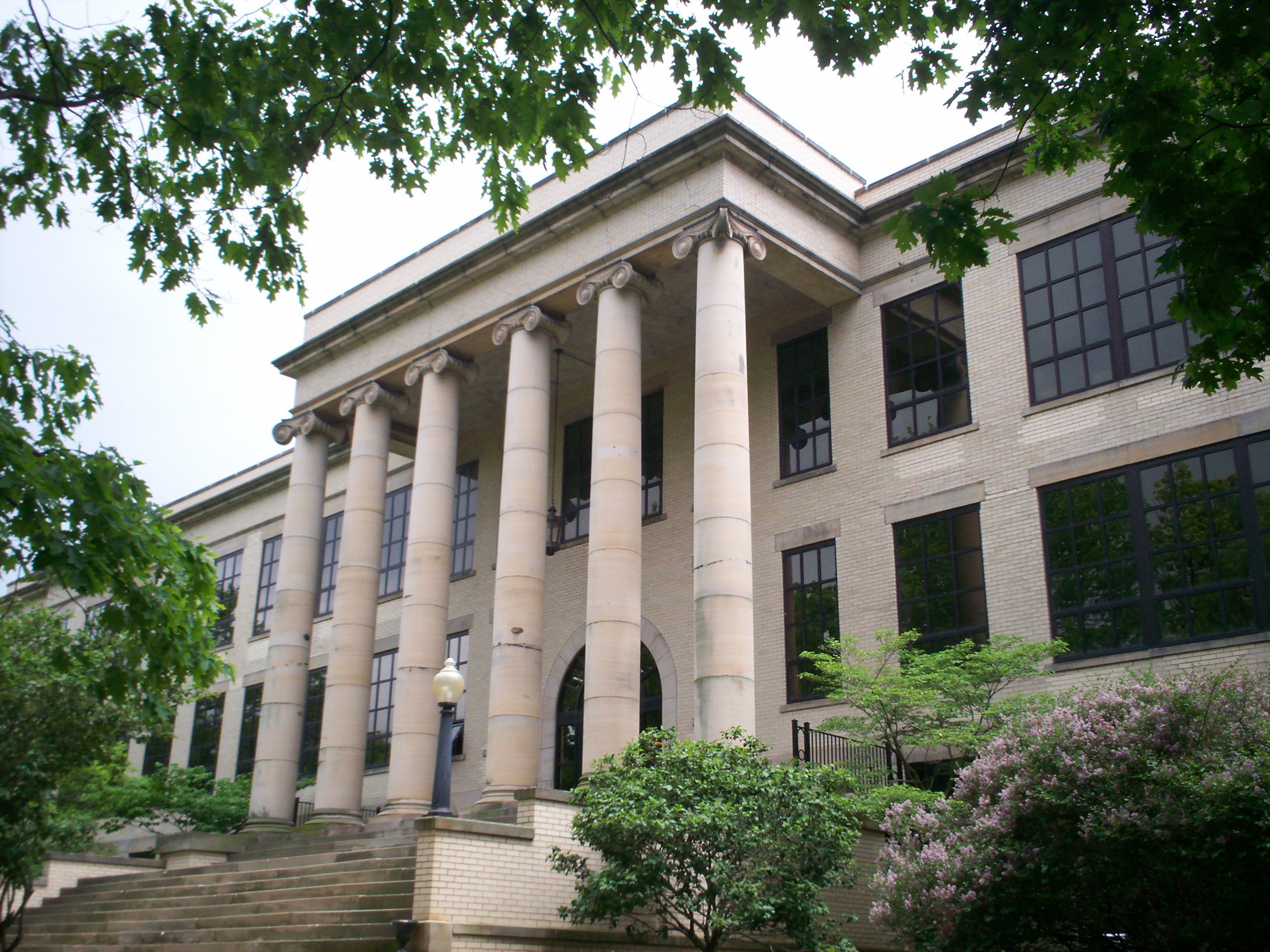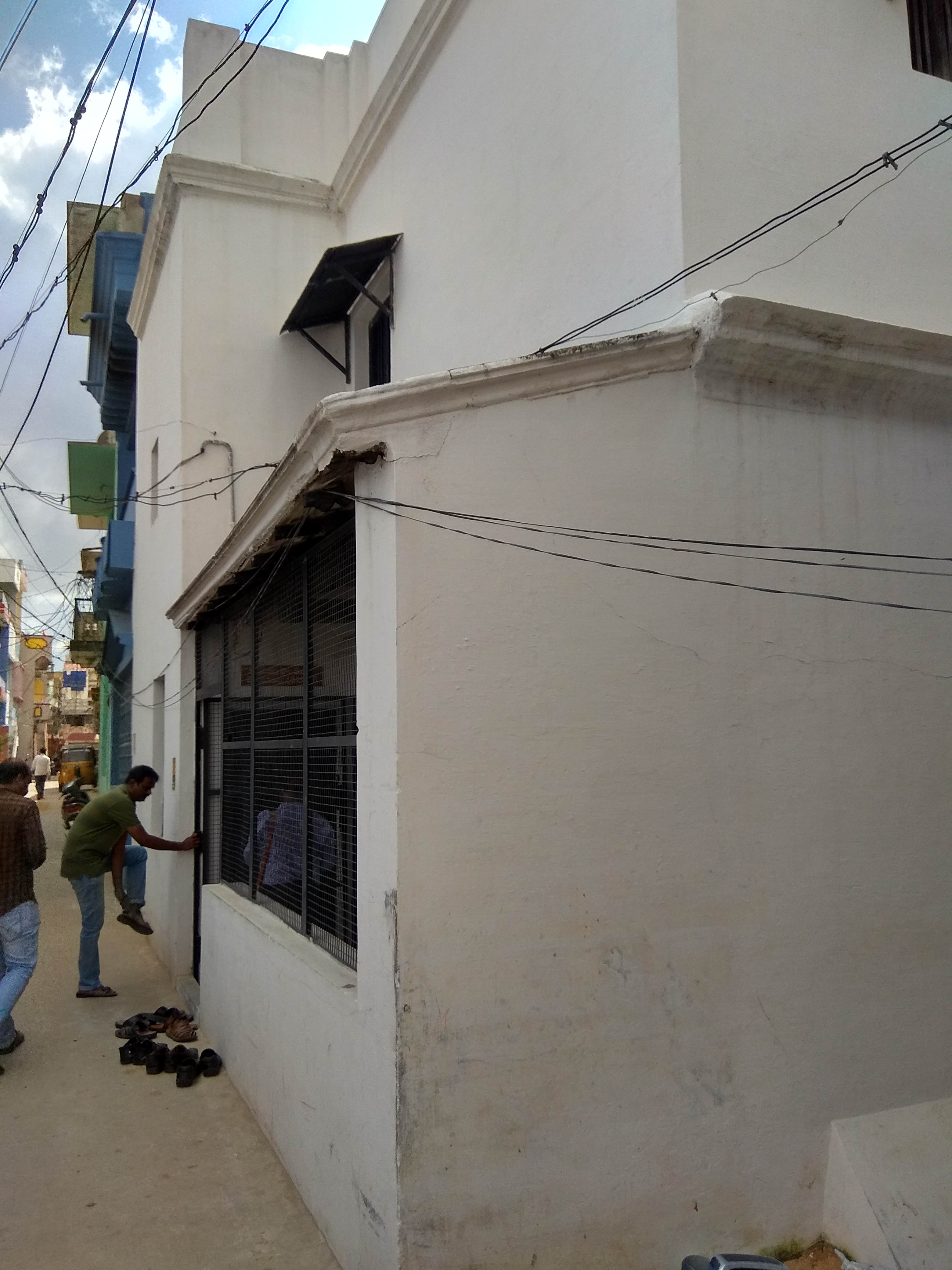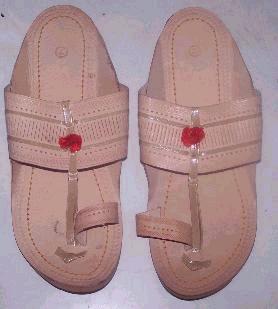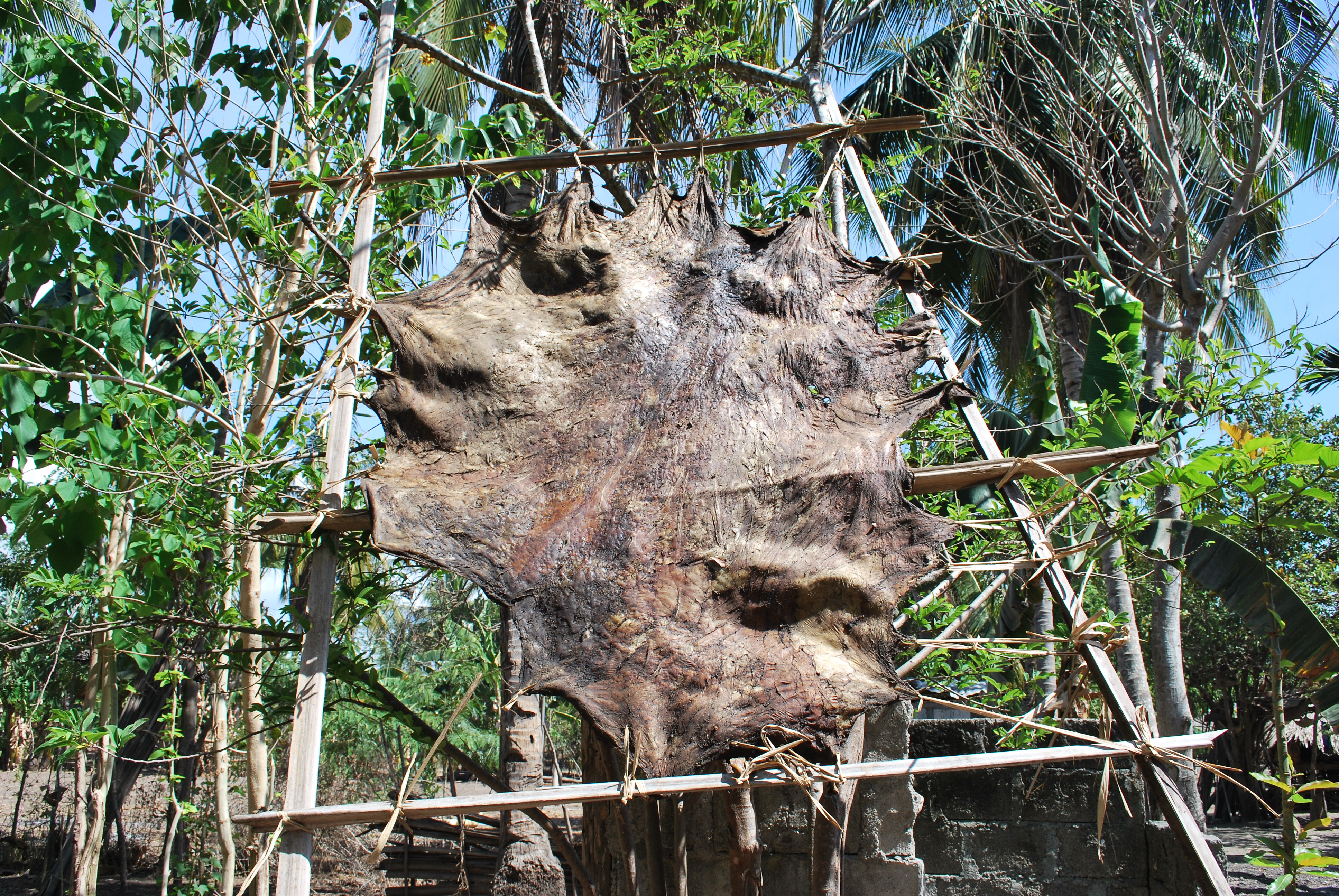|
Nari Gandhi
Nariman (Nari) Dossabhai Gandhi (1934–1993) was an Indian architect known for his highly innovative works in organic architecture. He practiced as an architect in India from 1964 to 1993 having worked on approximately 27 projects.Jalia 2008, p. 36 He primarily focused on designing residences with a secondary focus on designing furniture, objects, and upholstery textiles.Jalia 2008, p. 36, p. 106 Early life and education Nari Gandhi was born on 2 January 1934 in Surat to a Zoroastrian Parsi family based in Mumbai. He was one of the six children and had three brothers and two sisters. He completed his primary and secondary education at St. Xavier's High School located in Fort, Mumbai. He then attended the Sir J. J. School of Art in Mumbai and pursued the diploma program in architecture until 1956. During his time at the Sir J. J. School of Art, he was acquainted with Rustom Patell, a former Taliesin (1949-1952), who, in turn, introduced him to a colleague from Taliesin, Mansinh ... [...More Info...] [...Related Items...] OR: [Wikipedia] [Google] [Baidu] |
Surat
Surat (Gujarati Language, Gujarati: ) is a city in the western Indian States and territories of India, state of Gujarat. The word Surat directly translates to ''face'' in Urdu, Gujarati language, Gujarati and Hindi. Located on the banks of the river Tapti near its confluence with the Arabian Sea, it used to be a large seaport. It is now the commercial and economic centre of South Gujarat, and one of the largest urban areas of western India. It has well-established diamond and textile industry, and is a major supply centre for apparels and accessories. About 90% of the world's diamonds are cut and polished in Surat. It is the second largest city in Gujarat after Ahmedabad and the List of most populous cities in India, eighth largest city by population and List of million-plus urban agglomerations in India, ninth largest urban agglomeration in India. It is the administrative capital of the Surat district. The city is located south of the state capital, Gandhinagar; south of A ... [...More Info...] [...Related Items...] OR: [Wikipedia] [Google] [Baidu] |
Kent State University
Kent State University (KSU) is a Public university, public research university in Kent, Ohio, United States. The university includes seven regional campuses in Northeast Ohio located in Kent State University at Ashtabula, Ashtabula, Kent State University at Geauga, Burton, Kent State University at East Liverpool, East Liverpool, Kent State University at Stark, Jackson Township, Kent State University at Tuscarawas, New Philadelphia, Kent State University at Salem, Salem, and Kent State University at Trumbull, Warren, along with additional regional and international facilities in Cleveland, Independence, Ohio, Independence, and Twinsburg, Ohio; New York City; and Florence, Italy. The university was established in 1910 as a normal school. The first classes were held in 1912 at various locations and in temporary buildings in Kent and the first buildings of the Ohio State Normal College at Kent, original campus opened the following year. Since that time the university has grown to i ... [...More Info...] [...Related Items...] OR: [Wikipedia] [Google] [Baidu] |
University Of Mumbai Alumni
A university () is an institution of tertiary education and research which awards academic degrees in several academic disciplines. ''University'' is derived from the Latin phrase , which roughly means "community of teachers and scholars". Universities typically offer both undergraduate and postgraduate programs. The first universities in Europe were established by Catholic monks. The University of Bologna (), Italy, which was founded in 1088, is the first university in the sense of: *being a high degree-awarding institute. *using the word (which was coined at its foundation). *having independence from the ecclesiastic schools and issuing secular as well as non-secular degrees (with teaching conducted by both clergy and non-clergy): grammar, rhetoric, logic, theology, canon law and notarial law.Hunt Janin: "The university in medieval life, 1179–1499", McFarland, 2008, , p. 55f.de Ridder-Symoens, Hilde''A History of the University in Europe: Volume 1, Universities in the Midd ... [...More Info...] [...Related Items...] OR: [Wikipedia] [Google] [Baidu] |
1993 Deaths
This is a list of lists of deaths of notable people, organized by year. New deaths articles are added to their respective month (e.g., Deaths in ) and then linked below. 2025 2024 2023 2022 2021 2020 2019 2018 2017 2016 2015 2014 2013 2012 2011 2010 2009 2008 2007 2006 2005 2004 2003 2002 2001 2000 1999 1998 1997 1996 1995 1994 1993 1992 1991 1990 1989 1988 1987 1986 Earlier years ''Deaths in years earlier than this can usually be found in the main articles of the years.'' See also * Lists of deaths by day * Deaths by year (category) {{DEFAULTSORT:deaths by year ... [...More Info...] [...Related Items...] OR: [Wikipedia] [Google] [Baidu] |
1934 Births
Events January–February * January 1 – The International Telecommunication Union, a specialist agency of the League of Nations, is established. * January 15 – The 8.0 1934 Nepal–Bihar earthquake, Nepal–Bihar earthquake strikes Nepal and Bihar with a maximum Mercalli intensity scale, Mercalli intensity of XI (''Extreme''), killing an estimated 6,000–10,700 people. * February 6 – 6 February 1934 crisis, French political crisis: The French far-right leagues rally in front of the Palais Bourbon, in an attempted coup d'état against the French Third Republic, Third Republic. * February 9 ** Gaston Doumergue forms a new government in France. ** Second Hellenic Republic, Greece, Kingdom of Romania, Romania, Turkey and Kingdom of Yugoslavia, Yugoslavia form the Balkan Pact. * February 12–February 15, 15 – Austrian Civil War: The Fatherland Front (Austria), Fatherland Front consolidates its power in a series of clashes across the country. * February 16 – The ... [...More Info...] [...Related Items...] OR: [Wikipedia] [Google] [Baidu] |
The Times Of India
''The Times of India'' (''TOI'') is an Indian English-language daily newspaper and digital news media owned and managed by the Times Group. It is the List of newspapers in India by circulation, third-largest newspaper in India by circulation and List of newspapers by circulation, largest selling English-language daily in the world. It is the oldest English-language newspaper in India, and the second-oldest Indian newspaper still in circulation, with its first edition published in 1838. It is nicknamed as "The Old Lady of Bori Bunder", and is a newspaper of record. Near the beginning of the 20th century, Lord Curzon, the Viceroy of India, called ''TOI'' "the leading paper in Asia". In 1991, the BBC ranked ''TOI'' among the world's six best newspapers. It is owned and published by Bennett, Coleman & Co. Ltd. (BCCL), which is owned by the Sahu Jain family. In the Brand Trust Report India study 2019, ''TOI'' was rated as the most trusted English newspaper in India. In a 2021 surve ... [...More Info...] [...Related Items...] OR: [Wikipedia] [Google] [Baidu] |
Jiddu Krishnamurti
Jiddu Krishnamurti ( ; 11 May 1895 – 17 February 1986) was an Indian Philosophy, philosopher, speaker, writer, and Spirituality, spiritual figure. Adopted by members of the Theosophy, Theosophical tradition as a child, he was raised to fill the advanced role of Maitreya (Theosophy)#The World Teacher Project, World Teacher, but in adulthood he rejected this mantle and distanced himself from the related religious movement. He spent the rest of his life speaking to groups and individuals around the world; many of these talks have been published. He also wrote many books, among them ''The First and Last Freedom'' (1954) and ''Commentaries on Living'' (1956–60). His last public talk was in January 1986, a month before his death at his home in Ojai, California. Krishnamurti asserted that "truth is a pathless land" and advised against following any doctrine, discipline, teacher, guru, or authority, including himself. He dismissed the need for contrived meditation techniques, inste ... [...More Info...] [...Related Items...] OR: [Wikipedia] [Google] [Baidu] |
Kolhapuri Chappal
Kolhapuri chappals are Indian decorative hand-crafted and braided leather slippers that are locally tanned using vegetable dyes. Kolhapuri Chappals or Kolhapuris as they are commonly referred to are a style of open-toed, T-strap sandal, but also braided leather Mules or braided leather shoe type designs are also common. History The origin of Kolhapuri Chappals dates back to 12th century when the King Bijjala and his prime minister Basavanna encouraged Kolhapuri Chappal production to support local cordwainers. According to historic records, Kolhapuris were first worn as early as the 13th century. Previously known as Kapashi, Paytaan, Kachkadi, Bakkalnali, and Pukri, the name indicated the village where they were made. Shahu I of Kolhapur (and his successor Rajaram II) encouraged Kolhapuri Chappal industry and 29 tanning centres were opened during his rule. GI tag In July 2019 Kolhapuri chappals got a geographical indication tag from the Controller General of Patents, De ... [...More Info...] [...Related Items...] OR: [Wikipedia] [Google] [Baidu] |
Khadi
Khadi (, ), derived from khaddar, is a hand-spun and woven natural fibre cloth promoted by Mahatma Gandhi, Gandhi as Swadeshi movement, ''swadeshi (of homeland)'' for the freedom struggle of India and the term is used throughout the Indian subcontinent."Freedom@70: How Khadi is getting a new spin" ''The Economic Times'', 13 August 2017. The first piece of the hand-woven cloth was made in the Sabarmati Ashram, Sabarmati Ashram of Gandhi during 1917–18. The coarseness of the cloth led Gandhi to call it ''khadi''. The cloth is made from cotton, but it may also include silk or wool, which are all spun into yarn on a ''Spinning wheel#Charkha, charkha''. It is a versatile fabric that remains cool in summer and war ... [...More Info...] [...Related Items...] OR: [Wikipedia] [Google] [Baidu] |
Leather
Leather is a strong, flexible and durable material obtained from the tanning (leather), tanning, or chemical treatment, of animal skins and hides to prevent decay. The most common leathers come from cattle, sheep, goats, equine animals, buffalo, pigs and hogs, ostriches, and aquatic animals such as seals and alligators. Leather can be used to make a variety of items, including clothing, footwear, handbags, furniture, tools and sports equipment, and lasts for decades. Leather making has been practiced for more than 7,000 years and the leading producers of leather today are China and India. Critics of tanneries claim that they engage in unsustainable practices that pose health hazards to the people and the environment near them. Production processes The leather manufacturing process is divided into three fundamental subprocesses: preparatory stages, tanning, and crusting. A further subprocess, finishing, can be added into the leather process sequence, but not all leathers ... [...More Info...] [...Related Items...] OR: [Wikipedia] [Google] [Baidu] |
Glass
Glass is an amorphous (non-crystalline solid, non-crystalline) solid. Because it is often transparency and translucency, transparent and chemically inert, glass has found widespread practical, technological, and decorative use in window panes, tableware, and optics. Some common objects made of glass are named after the material, e.g., a Tumbler (glass), "glass" for drinking, "glasses" for vision correction, and a "magnifying glass". Glass is most often formed by rapid cooling (quenching) of the Melting, molten form. Some glasses such as volcanic glass are naturally occurring, and obsidian has been used to make arrowheads and knives since the Stone Age. Archaeological evidence suggests glassmaking dates back to at least 3600 BC in Mesopotamia, Ancient Egypt, Egypt, or Syria. The earliest known glass objects were beads, perhaps created accidentally during metalworking or the production of faience, which is a form of pottery using lead glazes. Due to its ease of formability int ... [...More Info...] [...Related Items...] OR: [Wikipedia] [Google] [Baidu] |
Brick
A brick is a type of construction material used to build walls, pavements and other elements in masonry construction. Properly, the term ''brick'' denotes a unit primarily composed of clay. But is now also used informally to denote building units made of other materials or other chemically cured construction blocks. Bricks can be joined using Mortar (masonry), mortar, adhesives or by interlocking. Bricks are usually produced at brickworks in numerous classes, types, materials, and sizes which vary with region, and are produced in bulk quantities. Concrete masonry unit, ''Block'' is a similar term referring to a rectangular building unit composed of clay or concrete, but is usually larger than a brick. Lightweight bricks (also called lightweight blocks) are made from expanded clay aggregate. Fired bricks are one of the longest-lasting and strongest building materials, sometimes referred to as artificial stone, and have been used since . Air-dried bricks, also known as mudbricks ... [...More Info...] [...Related Items...] OR: [Wikipedia] [Google] [Baidu] |









